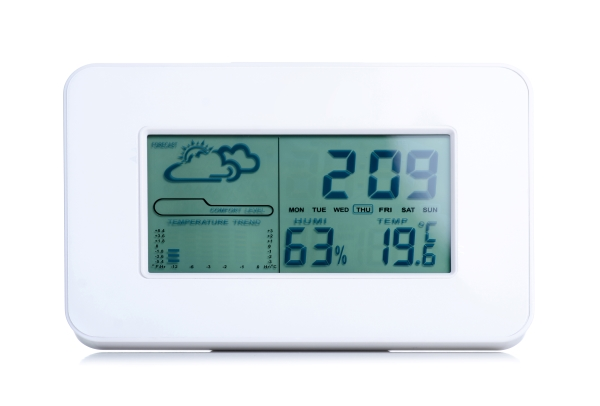What is Relative Humidity and How Does it Affect Your Home’s Comfort

Do you ever feel too cold in the winter and too hot in the summer? If so, your home may not have the right relative humidity. Relative humidity is a measure of how much water vapour is in the air, and it affects our comfort level both indoors and outdoors. In most situations, the ideal indoor relative humidity is between 40 and 50% and can be regulated using a humidifier and a dehumidifier. In this blog post, we will discuss what relative humidity is and how it affects your home’s comfort. We will also provide tips on how to achieve the ideal indoor relative humidity level.
Definition of Relative Humidity
Relative humidity is the amount of water vapour in the air compared to the amount of water vapour that the air can hold at a given temperature. It is expressed as a percentage. For example, if the air outside has a relative humidity of 50 percent, this means that it contains 50 percent of the water vapour that it could potentially contain. Relative humidity is also closely related to the dew point. The dew point is the temperature that air needs to reach to achieve a relative humidity of 100 percent. So relative humidity is the percent of moisture saturation at a given temperature.
Relative Humidity and Your Home’s Comfort
When trying to find the ideal indoor temperature for your home, it's important to remember that your thermostat settings are only half the story. To keep your home truly comfortable, it's important to manage your indoor relative humidity, as well.
The ideal indoor relative humidity level is between 40 and 50%. This range is comfortable for most people and helps to reduce the risk of health problems associated with either too much or too little humidity. Additionally, maintaining the ideal relative humidity level in your home can help to protect your furniture and belongings from damage.
The human body is extremely sensitive to changes in relative humidity. When the air is too dry, our mucous membranes can become irritated, leading to conditions such as nosebleeds, static electricity shocks, and an increased risk of respiratory infections. On the other hand, when the air is too humid, we can experience discomfort due to sweating and sticky skin. In extreme cases, high humidity can lead to mould growth in our homes. What happens when relative humidity reaches 100 percent is that the air can no longer hold the water vapour, and it changes to liquid form. You may see this in the form of condensation, damaged walls or furniture, or physical discomfort.
So, what happens to relative humidity when temperatures increase? In most cases, as temperature increases, the relative humidity will decrease. The reverse is also true: as the temperature decreases, the relative humidity will increase. This is why your home’s relative humidity may fluctuate from season to season, requiring you to adjust your humidity levels based on both temperature and humidity conditions.
Related Topic: Signs You Have Poor Indoor Air Quality
Relative Humidity and Your Home’s HVAC Costs
Another important consideration when it comes to relative humidity is its impact on your home’s heating, ventilation, and air conditioning (HVAC) system.
In the winter, low indoor relative humidity can cause your HVAC system to work overtime as it tries to maintain a comfortable temperature. This not only wastes energy and drives up your utility bills, but it can also shorten the lifespan of your HVAC system. In the summer, high indoor relative humidity can make it feel even hotter than it actually is. This causes your air conditioner to run more often, leading to the same waste of energy and money.
The good news is that you can use both a humidifier and a dehumidifier to help lower your energy costs. If your home’s relative humidity is too low, you can use a humidifier to add moisture to the air. Similarly, if your home’s relative humidity is too high, you can use a dehumidifier to remove moisture from the air. This will help to make your home more comfortable and can reduce your energy costs.
When to Get a Humidifier
Ideally, the humidity in your home should be between 30 and 50 percent relative humidity. You can measure the humidity in your home with a low-cost tool called a hygrometer or use a relative humidity chart or calculator. If you find that your indoor humidity levels are below 30 percent in any room, it’s probably time to get a humidifier. This is especially true in the winter, when cold temperatures can lead to dry skin or bloody noses. Other reasons to add humidity to your home include improving sleep quality, reducing static electricity, and reducing the spread of germs in your indoor air.
When to Get a Dehumidifier
On the other hand, too much humidity in a home can lead to many problems. If the relative humidity in your home measures higher than 50 percent, it’s probably time to think about getting a dehumidifier. Dehumidifiers work by trapping excess moisture in the air and releasing drier air back into the room. If you notice musty odours, mould, or other humidity-related issues, a dehumidifier can significantly improve your indoor air quality. Visit this link to learn more about the different kinds of dehumidifiers and what to look for.
Get Professional Assistance
Now that you know more about relative humidity, you can start to monitor and manage the humidity in your home more carefully. But if humidity control sounds a bit complicated, getting some professional assistance might be a better way to go. The professionals at your local Aire Serv can help measure and improve the relative humidity in your home so, you stay comfortable throughout the year. To learn more, call us or schedule an appointment online today.
 Click to call
Click to call


